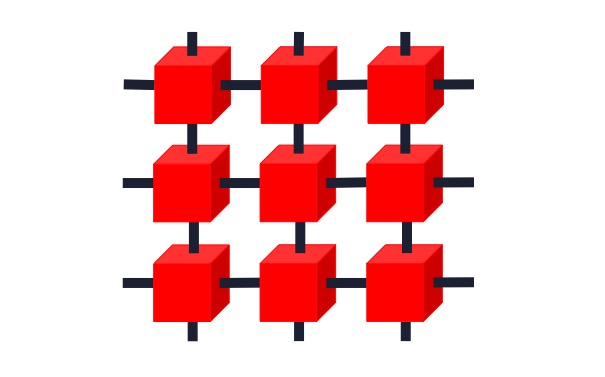Many people associate blockchain with cryptocurrencies such as Bitcoin and Ethereum. This needs clarification. Cryptocurrencies are based on Blockchain or Distributed Ledger Technologies (DLT). But Blockchain can be used for much more than for cryptocurrencies.
Blockchain or distributed ledger technologies make transactions more secure. The reason can be easily explained. Transaction information is stored on a distributed network of nodes. They all store the same information. Any attempt to change the information on one node will be rejected. This makes it very difficult to compromise information. As a consequence this kind of self-guard mechanism helps to eliminate human control, paper work and bureaucracy which reduces costs and increases transaction speed. This is ideal to be applied to financial services, but also to insurance, supply chain, health care and many other industries. One of the possible application is its use for cryptocurrencies. But this is by for not the only way to use this technology.

How does Distributed Ledger / Blockchain work?
Distributed Ledger Technology can be understood as a distributed and shared database with entries that are encrypted and approved by each node of the distributed network. Each entry of information into such distributed database is made in each node and based on a verification upon a consensus mechanism among all involved nodes. Only when the majority of all nodes agree, an entry can be made. This voting process is also called consensus algorythm. Once consensus has been reached the same agreed information is equally stored on each node separately. Or in other words, upon consensus all nodes contain the same copy the database.
Blockchain is one kind of Distributed Ledger Technology which is different from others. Every blockchain is a distributed ledger, but not every distributed ledger is a blockchain. With Blockcahin the information is stored by adding new blocks to the existing blocks, forming a chain of information block as a secure and valid way of distributed consensus. It can only add blocks while changing or deleting information in earlier blocks is impossible. As a consequence Blockchain is making the database as list of of records to continuously grow.
Distributed Ledger or Blockchain technology therefore enables to securly and efficiently store information that cannot be tampered. This is ideal for any application based on transactions, events or votings including financial transactions, managing records, tracking ownership or decisions and many more.
A system based on Blockchain technologies can exist without a central authority such as a central bank or a central server managing all information. The trust in a central authority is replaced by the trust in an decentralized self-governed computational system. This insight led to the creation of Bitcoin as the first cryptocurrency.
Bitcoin and Cryptocurrencies
Bitcoin has been invented in 2009 based on Blockchain technologies for the purpose of instant secure and anonymous payments by eliminating banks as third parties to veryfy the transaction. In fact, Bitcoin pioneered Blockchain technologies. With the hype of Bitcoin in 2018 the entire world became aware of it. However, the path to mass adoption of the technology is still long. The hype attracted many bad actors which where seeking a quick win. This made the technology to lose substantial credibiltiy. However, when applied correctly, the benefits of the technology are so huge that ultimately the technology will experience a major breakthrough and an impact that will go beyond the impact of the Internet.
Currently Bitcoin is being operated by a network of approximately 10,000 full nodes. These are nodes that fully verify all of the rules of Bitcoin. Full contain all information such as blocks and transactions and they enforce the Bitcoin’s consensus rules.
It is evident that the more nodes involved the more secure the distributed networks becomes to prevent the transaction from being compromised. The downside of this mechanism is that the more nodes are involved to dublicate all the information, the more expensive it is to maintain such a network and it also consumes a lot of energy. Also it depends on who is operating such nodes. It makes sense that a distributed network of thousands of nodes operated by many independent parties operated on different infrastructure is much more secure that a network with a few nodes operated by one party on one network. Also it becomes evident that blockchain technologies must be applied wisely in order to limit the amount of data which is multipied to be stored on decentralized nodes. Therefore it suits much better so slim transaction than to big data.

Schlussfolgerung
Distributed ledgers as a technology, and Blockchains as a methodology is here to stay. It can be expected to dirupt every economic sector in any part of the world. The disruption starts in the financial industry by entirely changing the current banking landscape. New players will become big, most traditional players will shrink or collapse and disappear.
While Internet was revolutionizing the way we as a society store and share information, Blockchain is another revolutionary technology which is changing the way we as a society and IOT interact with each other in a trusted self-governed way. DISEO.com in turn is revolutionizing Social Media by decentralizing it and using Blockchain technologies as a way for trusted self-governed storage of personal data and social interactions.
